I put this post together because I want to show how play with dolls can spark real learning. Here is why this matters: kids learn best when the mind is curious and the hands are busy. I have watched dolls light up stories, plans, and questions in my own kids. You can see it when a simple tea party becomes counting cups, sharing ideas, and a quick math moment.
If you are a parent, caregiver, or teacher who loves hands on learning, this is for you. You care about imagination, language growth, and social skills. You want ideas that fit into busy days and small spaces.
1. Enhancing Imagination
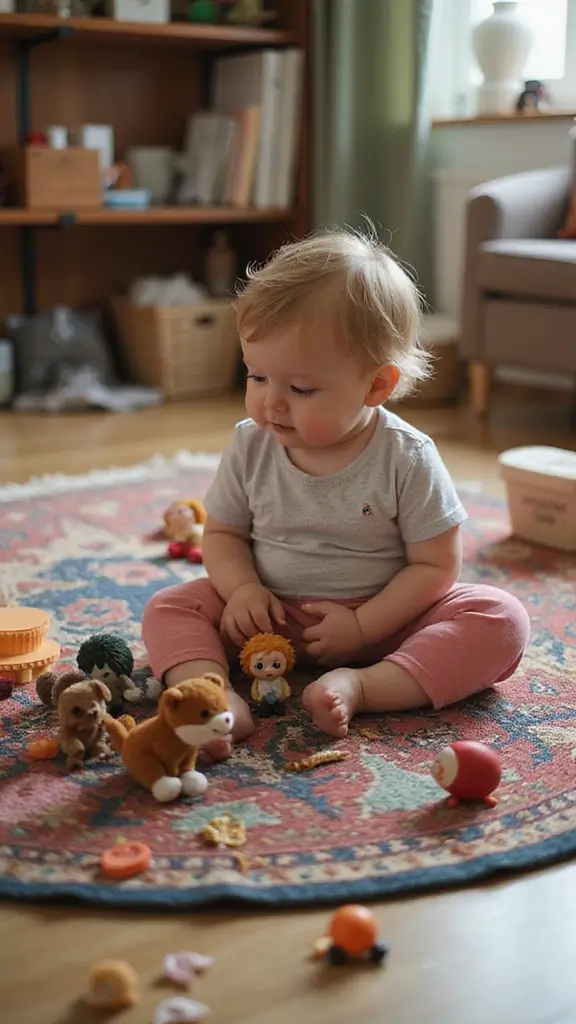
If you want your child to stretch their imagination, start with a doll. Dolls give them a stage for play. They act out stories, make up heroes, and visit places they can’t reach. Here is why this matters:
– Imagination and language: Storytelling grows with scenes. Your child tells, asks, and repeats new ideas.
– Creative thinking: They test ideas, invent settings, and try fresh roles.
– Problem solving: They solve doll conflicts, plan a rescue, or invent games.
Next steps: keep a box of props: soft clothes, small boats, and cups to spark play. With each session, your child builds a world.
1. Enhancing Imagination
Editor’s Choice
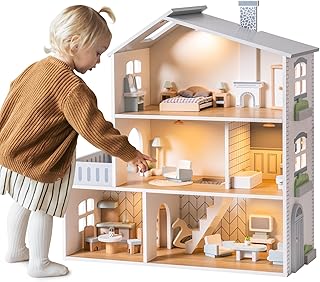
ROBOTIME Wooden Dollhouse, Wooden Doll House with 29 Pieces of Furniture…
 Amazon$82.56
Amazon$82.56
fash n kolor®, My Sweet Baby Disappearing Doll Feeding Set | Baby Care 6…
 AmazonCheck Price
AmazonCheck Price
400 Pcs Play Props Set – Mix of 100/50 / 20/10 (100 Each), Learning Tool…
 Amazon$10.99
Amazon$10.992. Role-Playing Real-Life Scenarios
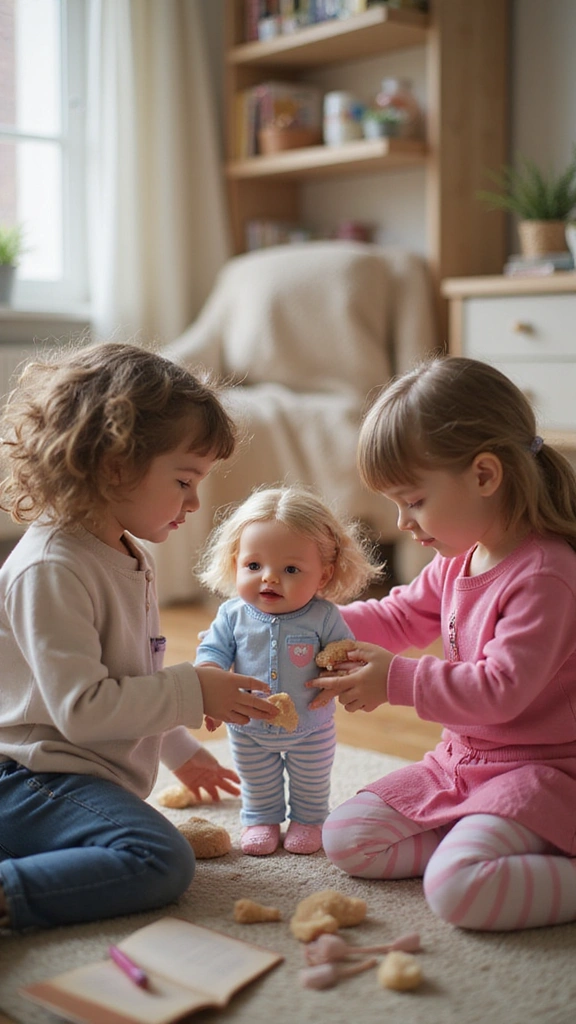
You can use dolls to rehearse everyday moments. Start with simple scenes like playhouse, school, or a doctor visit. Let your child lead. You guide with open questions like, “How do you feel?” and “What would you say next?” This builds social skills. As they act, they read faces, share, and solve small problems. Here is why it helps:
– Social Understanding: practicing empathy and talking kindly.
– Confidence Building: speaking up in familiar settings.
– Emotional Awareness: naming feelings and choosing a response.
Next steps: set a short scene, keep roles rotating, and end with a quick recap of felt feelings.
2. Role-Playing Real-Life Scenarios
Editor’s Choice

Dollhouse with 4 Princesses, 4 Unicorns, Dog, Furniture and Accessories …
 Amazon$39.99
Amazon$39.99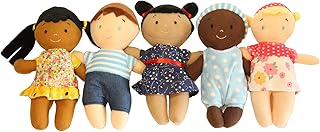
Diversity Buddies – Multicultural Plush Dolls Set, Diversity Toys for Ki…
 Amazon$35.27
Amazon$35.27
Women’s 6 Piece Role Playing Costume Sets V Neck Collared Garter Lingeri…
 Amazon$27.99
Amazon$27.993. Developing Emotional Intelligence

Developing Emotional Intelligence with Dolls
Here is why you should use doll play to support your child’s feelings. When your child cares for a doll, they practice empathy. They imagine how the doll feels and what to say.
– Empathy in action: Ask, “How does the doll feel?” and guide kind replies.
– Name the feelings: Have your child say the emotion aloud, such as happy, sad, or worried.
– Solve a scene: If the doll argues with a friend, help your child say sorry and find a quick fix.
You gain calmer moods, better emotional regulation, and kinder care for others. Try ten minutes of guided doll play today.
3. Developing Emotional Intelligence
Editor’s Choice

Baby Starters Plush Baby Doll with Rattle, Brunette Olivia, Pink, 9 inch
 Amazon$13.99
Amazon$13.99
MEROCO Feelings Emotions Cards for Kids Therapy, Realistic Picture Cards…
 Amazon$9.99
Amazon$9.99
Dollhouse with 4 Princesses, 4 Unicorns, Dog, Furniture and Accessories …
 Amazon$39.99
Amazon$39.994. Boosting Social Skills
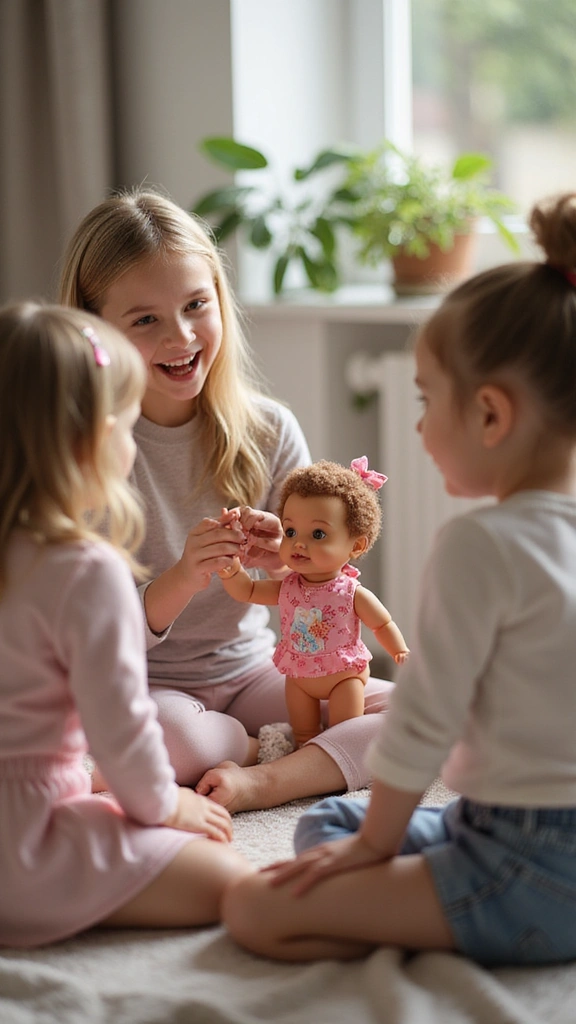
Here is why you should use dolls to build your child’s social skills.
Doll play gives practice with talk, listening, and sharing. They act out scenes, move voices, and switch roles. This makes everyday chats feel easy.
What you gain
– Communication: clearer words and calm tone
– Teamwork: taking turns and lending a hand
– Conflict management: negotiating and finding small compromises
Next steps: set up short doll playdates. Pick a simple scene like store, cafe, or kitchen. Offer gentle prompts and ask questions after play. Keep sessions sweet. Invite one friend at first, then gradually add others as skills grow together.
4. Boosting Social Skills
Editor’s Choice

Dollhouse with 4 Princesses, 4 Unicorns, Dog, Furniture and Accessories …
 Amazon$39.99
Amazon$39.99
Basket of Buddies Plush Diversity Multicultural Ethnic Dolls | Diversity…
 Amazon$38.99
Amazon$38.99
Melissa & Doug Construction Worker Costume Dress-Up Set for Kids (6-Piec…
 Amazon$21.99
Amazon$21.995. Stimulating Narrative Skills
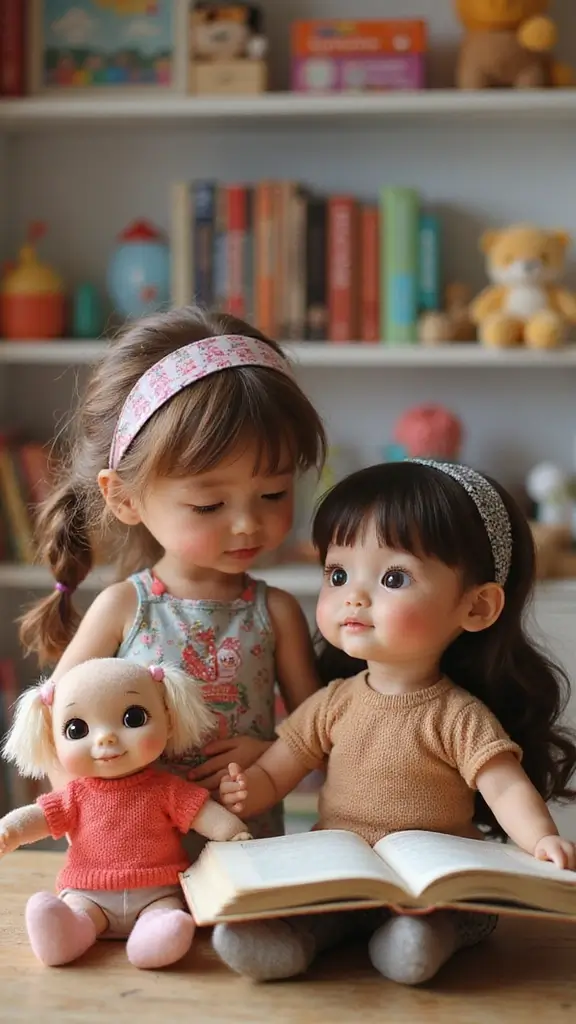
Here is why storytelling with dolls helps you boost your child’s narrative skills. When your child tells a tale, they order events and see a clear start, middle, and end. They hear sentences fit together and ideas flow. Feel the soft fabric and bright outfits as you act out the scene. They also practice saying ideas aloud, which helps speaking and writing.
– Story construction: beginning, middle, ending.
– Vocabulary boost: new words in dialogue.
Next steps
– Gather dolls and simple props to spark a scene.
– Ask, “What happens first? Then what? How does it end?”
– Record a tell on a phone and listen together.
Storytelling with dolls not only sparks creativity but also enhances your child’s narrative skills. Watch as they weave tales with a beginning, middle, and end, all while expanding their vocabulary along the way!
5. Stimulating Narrative Skills
Editor’s Choice
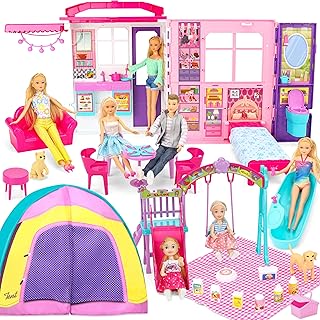
Doll House Portable & Foldable Dollhouse w/ 60+ Pcs & 2 Dolls, Play Hous…
 Amazon$39.99
Amazon$39.99
Melissa & Doug Safari Buddies Hand Puppets, Set of 6 (Elephant, Tiger, P…
 Amazon$29.99
Amazon$29.99
fash n kolor®, My Sweet Baby Disappearing Doll Feeding Set | Baby Care 6…
 AmazonCheck Price
AmazonCheck Price6. Encouraging Fine Motor Skills
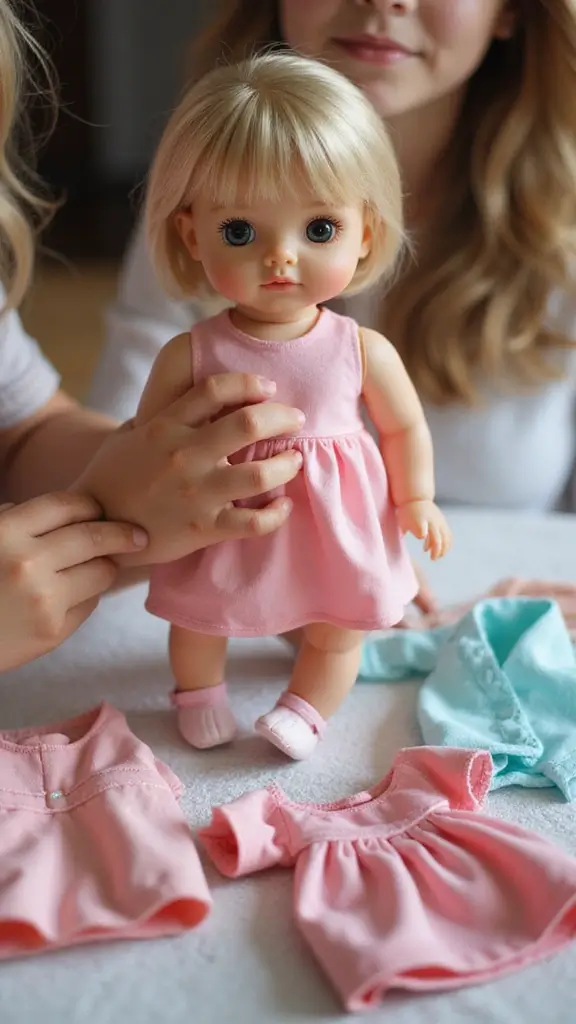
Here is why dolls help your child’s fine motor skills.
Dolls invite dressing, brushing hair, and adding accessories.
These tasks train fingers and eyes to move together.
Your child learns to move hands precisely while keeping eyes on the target.
This builds hand-eye coordination that matters in school and daily tasks.
– Hand strengthening comes from gripping buttons, snaps, and brushes.
– Coordination grows when you sync eye movement with hand actions.
– Independence builds as you complete simple doll tasks and boost self-care confidence.
Next steps: pick dolls with easy outfits, set short challenges, and celebrate steady progress.
It happens with play.
6. Encouraging Fine Motor Skills
Editor’s Choice
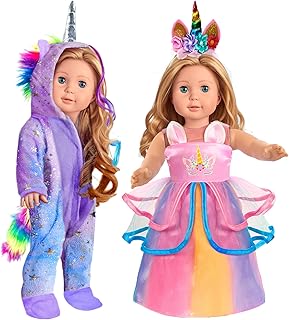
2-Sets 18-inch Doll-Clothes Set – Unicorn Clothes with Hair Clip and Hea…
 Amazon$15.99
Amazon$15.99
fash n kolor®, My Sweet Baby Disappearing Doll Feeding Set | Baby Care 6…
 AmazonCheck Price
AmazonCheck Price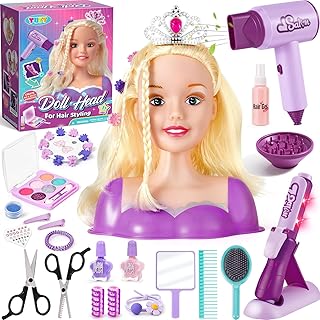
Hair Styling Doll Head Makeup Kit for Girls Toys, Hair Salon Toys & Real…
 Amazon$31.99
Amazon$31.997. Building Self-Confidence
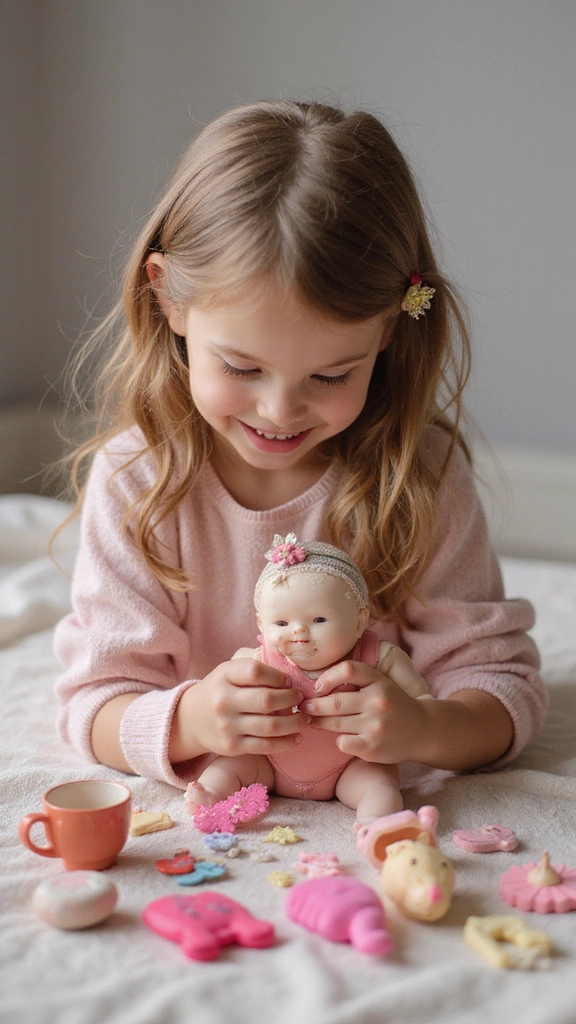
Want a simple way to boost your child’s self-confidence? Doll play gives them a safe space to own the story. You will see them try ideas, pick options, and learn from small wins.
– Decision-Making Skills: They choose outfits, scenes, and who speaks, weighing options in the moment.
– Self-Expression: They use voice, gestures, and props to show how a character feels.
– Resilience: When a plan falls short, they adjust and try again with a new plan.
Regular doll play builds steady self-assurance in everyday tasks. Next steps: set up a simple play space, keep sessions brief, and let your child lead. Ask gentle questions like, “What should happen next?” to keep it moving.
Doll play isn’t just fun; it’s a powerful way to boost your child’s self-confidence. Through imaginative stories, they learn to make choices, express themselves, and bounce back from setbacks. Every playtime is a step toward resilience!
7. Building Self-Confidence
Editor’s Choice

fash n kolor 4 Piece Baby Doll Play Set Flower Design Includes – Foldabl…
 AmazonGBP 46.63
AmazonGBP 46.63
Baby Doll Accessories Set – 7 Pcs Feeding and Caring Set with Magic Disa…
 Amazon$8.99
Amazon$8.99
Barbie Mysteries: Beach Detectives Daisy Doll Wearing Signature Removeab…
 Amazon$16.19
Amazon$16.198. Cultivating Patience and Focus
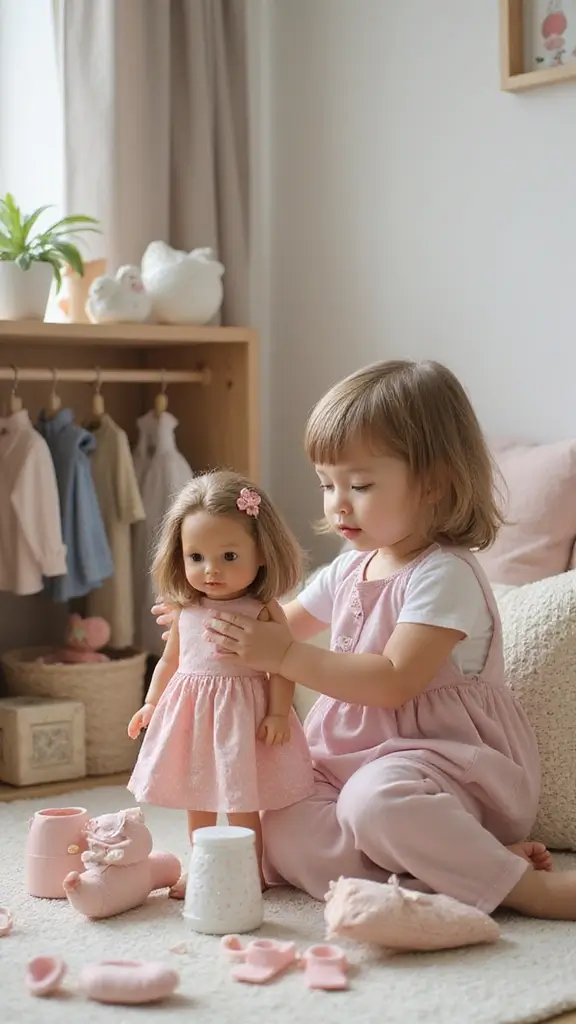
Patience and Focus in Doll Play
Are you noticing your child rush through small tasks during play? Doll chores like brushing hair or tying tiny laces teach patience. A simple, tidy setup helps your child slow down and pay attention. This focus can carry into school time too.
– Create a quiet dress-up spot: clean table, soft mat, easy outfits.
– Do one task at a time: brush hair, pick a dress, fasten buttons.
– Use short sessions: five to seven minutes, then a break.
– Narrate steps: “First, comb; next, button.”
– Celebrate effort and finish: praise careful work, then tidy up together.
If frustration shows, pause, breathe, switch tasks, then return.
8. Cultivating Patience and Focus
Editor’s Choice

Mattel Disney Princess Toys, Carriage to Castle Transforming Playset wit…
 Amazon$27.99
Amazon$27.99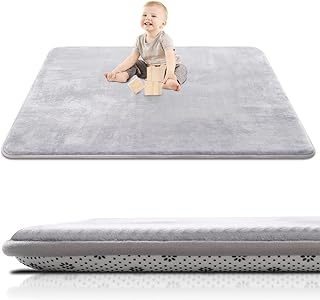
Thick Baby Play Mat for Floor,50 x 50 Playpen Mat,Tummy Time Foam Mat,Ul…
 Amazon$39.98
Amazon$39.98
71 Pcs Doll Clothes and Accessories, 5 Wedding Gowns 9 Fashion Dresses 3…
 Amazon$17.99
Amazon$17.999. Teaching Responsibility
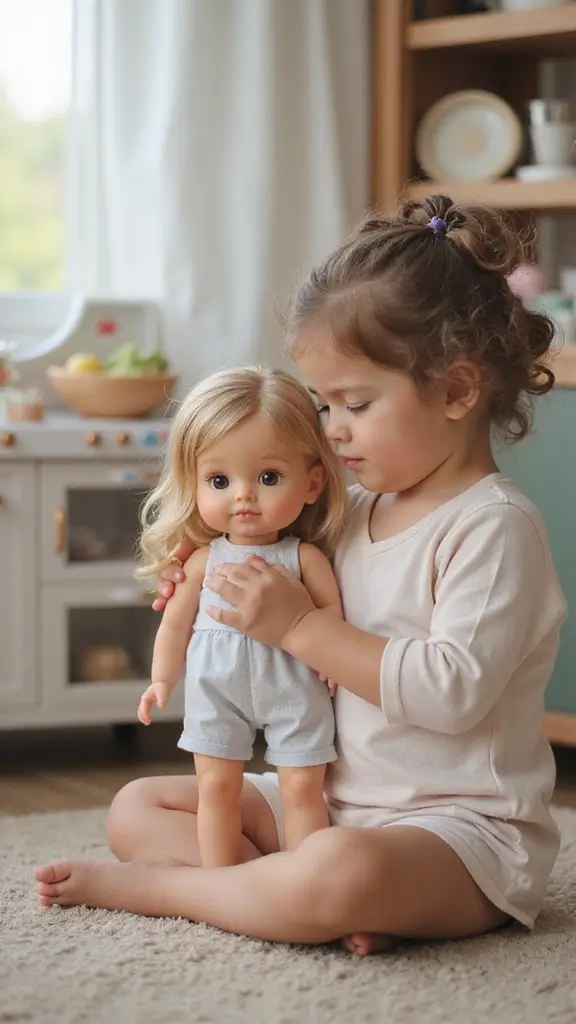
Here is why this play builds real life skills. When you care for a doll, your child practices small acts that mirror daily duties. The doll’s soft clothing, warm fabric, and tiny bottle become props for real care.
– Caretaking skills: your child learns to think about another being’s needs.
– Routine and responsibility: they follow a simple daily rhythm: dress the doll, feed a pretend meal, tidy the play area.
– Empathy toward others: they notice how the doll feels when touched gently and spoken to calmly.
Next steps: create a simple chart, use a soft cloth doll with real-looking clothes, and talk about how these habits help at home and in school.
9. Teaching Responsibility
Editor’s Choice
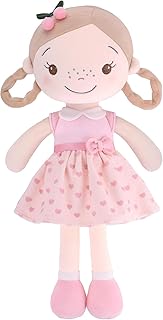
Soft Baby Doll Toys (16”) for Girls, My First Baby Rag Dolls for 1 Year…
 Amazon$15.99
Amazon$15.99
BARWA 11 Sets Doll Clothes Including 3 Sequins Dresses 4 Fashion Floral …
 Amazon$9.99
Amazon$9.99
Melissa & Doug Food Groups – 21 Hand-Painted Wooden Pieces and 4 Crates
 AmazonGBP 12.02
AmazonGBP 12.0210. Fostering Cultural Awareness
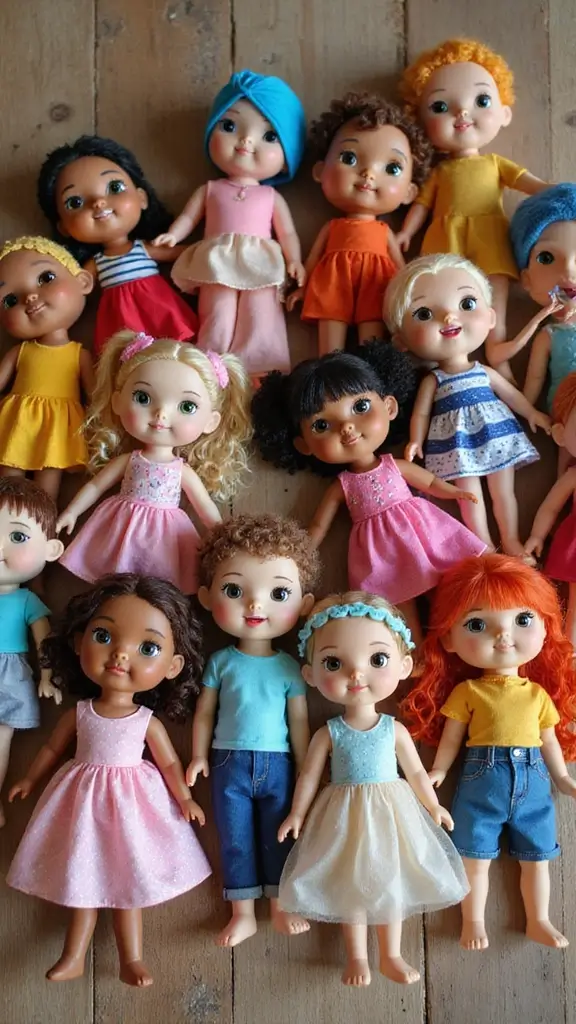
Are you helping your child see a world? Dolls from many cultures spark curiosity and respect. When you add dolls with different tones, outfits, and customs, your child meets ideas at home. You guide the talk with questions and short stories.
– Cultural sensitivity: Understand and respect people who look and live differently.
– Broader perspectives: Learn traditions from around the globe.
– Social inclusion: Build friendships across cultures.
Next steps you can start today:
– Pick dolls that show real life, not fantasy. Notice fabrics, colors, and how clothes feel.
– Tell quick, kid friendly stories about festivals or meals. Avoid stereotypes.
10. Fostering Cultural Awareness
Editor’s Choice

Basket of Buddies Plush Diversity Multicultural Ethnic Dolls | Diversity…
 Amazon$38.99
Amazon$38.99
Princess of the Nile Barbie Doll – Dolls of the World Collector Edition …
 Amazon$69.95
Amazon$69.95
Constructive Playthings 10 Inch Huggable Multi-Cultural Baby Dolls, Mult…
 Amazon$59.70
Amazon$59.7011. Encouraging Teamwork
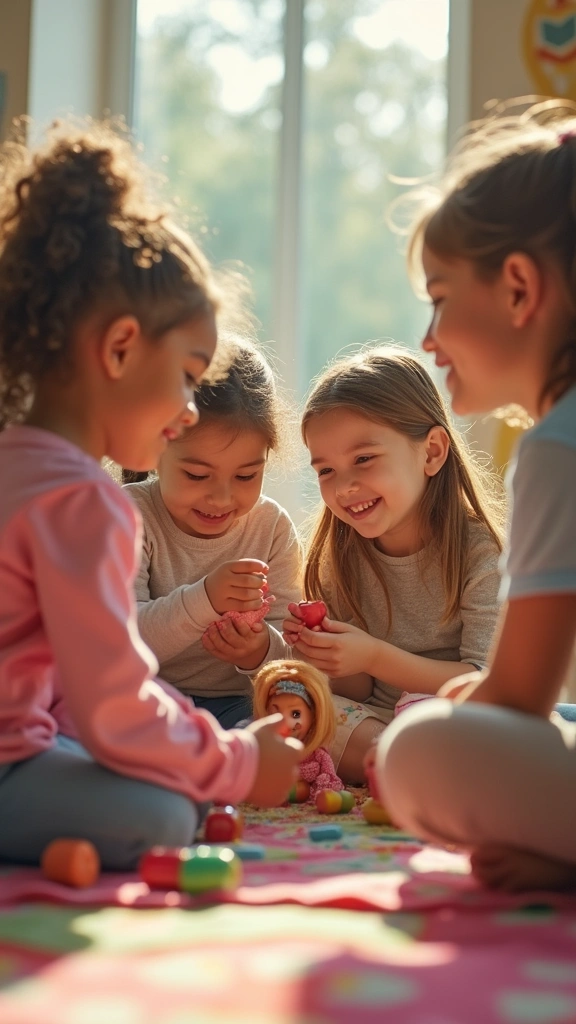
Here is why dolls teach teamwork.
When you play, your child learns to listen, share ideas, and shape the story as a team.
You can see them practice clear speech, when plans shift.
This builds social skills for class and friends.
– Collaboration skills: they work toward a shared scene and set roles for dolls.
– Social interaction: they greet peers, take turns, and keep conversations friendly.
– Compromise: they trade dolls, adjust plans, and find middle ground.
Next steps: pick a simple scene with cloth dolls, keep three kids, and set a timer.
Afterward, ask what worked and what to try next.
11. Encouraging Teamwork
Editor’s Choice

ARTST Doll Clothes,12 inch Baby Doll Clothes 6 Sets Include 5 Caps fit f…
 Amazon$16.99
Amazon$16.99
Dollhouse with 4 Princesses, 4 Unicorns, Dog, Furniture and Accessories …
 Amazon$39.99
Amazon$39.99
Melissa & Doug Construction Worker Costume Dress-Up Set for Kids (6-Piec…
 Amazon$21.99
Amazon$21.9912. Strengthening Family Bonds

Want closer, calmer evenings at home? Doll play helps you connect. When you join in, you show you care. Here is why: it sparks talks about feelings and everyday worries. Let’s break it down with simple steps you can use.
– Quality Time: Set aside 10–15 minutes after dinner. Sit on the floor with your child and their dolls. Look at them, nod, and listen.
– Shared Experiences: Create a tiny scene—a kitchen bake, a bus ride, a bedtime ritual. This builds happy memories.
– Open Dialogue: Ask simple, kind questions about what the dolls feel. Keep it low pressure.
By playing together, you strengthen family bonds and show love.
Doll play isn’t just fun—it’s a chance to connect! By sharing those little moments, you open the door to deeper conversations and strengthen family bonds. Set aside just 10 minutes and watch the magic unfold!
12. Strengthening Family Bonds
Editor’s Choice
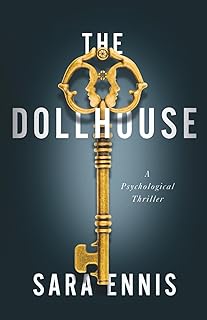
The Dollhouse: A psychological thriller (The Komorebi Serial Killer Series)
 AmazonEUR 14.46
AmazonEUR 14.46
Wooden Play Kitchen Toy Set with Light, Kids Children Pretend Toy Kitche…
 Amazon$139.99
Amazon$139.99
Barbie Gymnastics Doll & Accessories, Playset with Blonde Fashion Doll, …
 Amazon$15.23
Amazon$15.2313. Sparking Interest in Storytelling

If you want your child to love storytelling, dolls can help. Here is why: dolls become friends and main characters. They guide scenes, dialogue, and action. As your child moves the dolls, they see how a story starts, grows, and ends. Let’s break it down with simple ideas you can use.
– Creative Writing write a short day-in-the-life tale for a favorite doll.
– Public Speaking tell the scene aloud, then share it.
– Literacy Skills name words and show how sentences fit.
Storytime with dolls can spark a love of reading. Next steps: set up a storytelling corner and keep it playful.
13. Sparking Interest in Storytelling
Editor’s Choice

Barbie Mysteries: Beach Detectives Daisy Doll Wearing Signature Removeab…
 Amazon$16.19
Amazon$16.19
Oxford Primary Composition Notebooks, Kids Handwriting & Drawing Story J…
 Amazon$8.15
Amazon$8.15
Melissa & Doug Deluxe Puppet Theater – Sturdy Wooden Construction
 AmazonCheck Price
AmazonCheck Price14. Enhancing Visual-Spatial Awareness
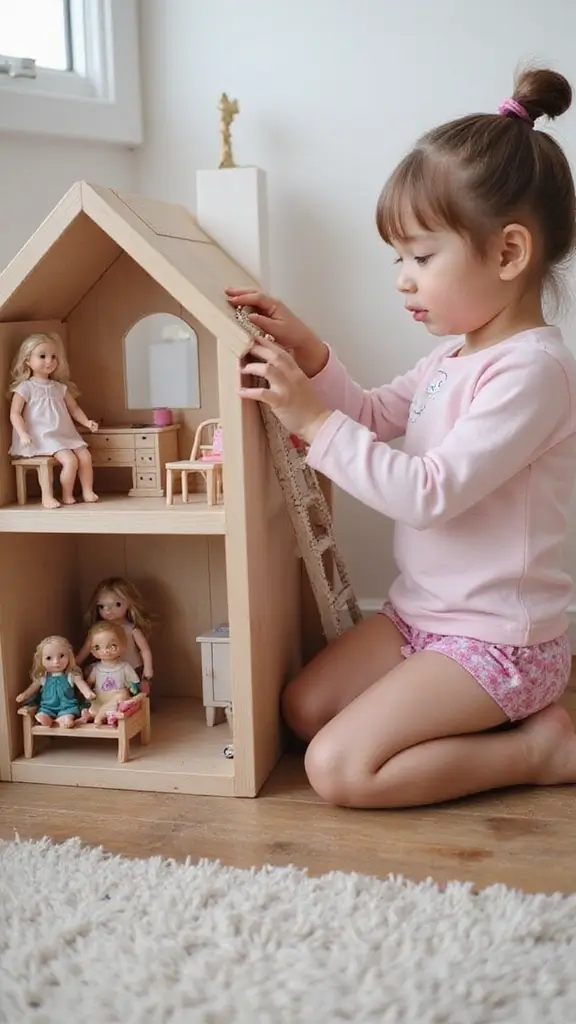
Is your child learning to see how pieces fit in a space? Playing with dolls builds visual-spatial skills. When you place a doll in a dollhouse, you and your child test how furniture fits, where doors open, and how paths connect. This practice helps with geometry, map reading, and navigation. Here is why it works:
– Spatial reasoning grows as you try layouts.
– Environmental awareness sharpens when you notice how rooms relate.
– Problem solving pops up as you squeeze pieces into tight spots.
Encourage setups, ask guided questions, and let your child lead the arrangement. Sensory cues and play boost thinking.
14. Enhancing Visual-Spatial Awareness
Editor’s Choice

Giant bean 36pcs Wooden Dollhouse Furniture Set 5 Rooms 4 Family Dolls, …
 Amazon$35.99
Amazon$35.99
Melissa & Doug Wooden Building Blocks Set – 100 Blocks in 4 Colors and 9…
 Amazon$21.97
Amazon$21.97
Barbie Gymnastics Doll & Accessories, Playset with Blonde Fashion Doll, …
 Amazon$15.23
Amazon$15.2315. Supporting Language Development

If you want your child to talk more and think clearly, doll play can help. It invites easy talk and real conversation. As your child makes dolls speak, they hear rhythm, sounds, and the flow of ideas. They gain new words, practice sentences, and tell simple stories.
– Vocabulary Growth: Your child gains new words that pop up in play.
– Conversational Skills: Your child learns to greet, ask questions, and take turns.
– Storytelling Fluency: Your child crafts a story with a clear start, middle, and end.
Tips: set a tiny scene, ask what happens next, and replay the scene to boost memory.
15. Supporting Language Development
Editor’s Choice

Dollhouse with 4 Princesses, 4 Unicorns, Dog, Furniture and Accessories …
 Amazon$39.99
Amazon$39.99
Belinda Fashion Walking Doll 12″ Interactive Vinyl Baby Sonic Control To…
 Amazon$39.98
Amazon$39.98
JOYIN 6Pcs Kids Hand Puppet Set with Working Mouth, Toddler Animal Plush…
 Amazon$24.99
Amazon$24.9916. Encouraging Creativity in Play
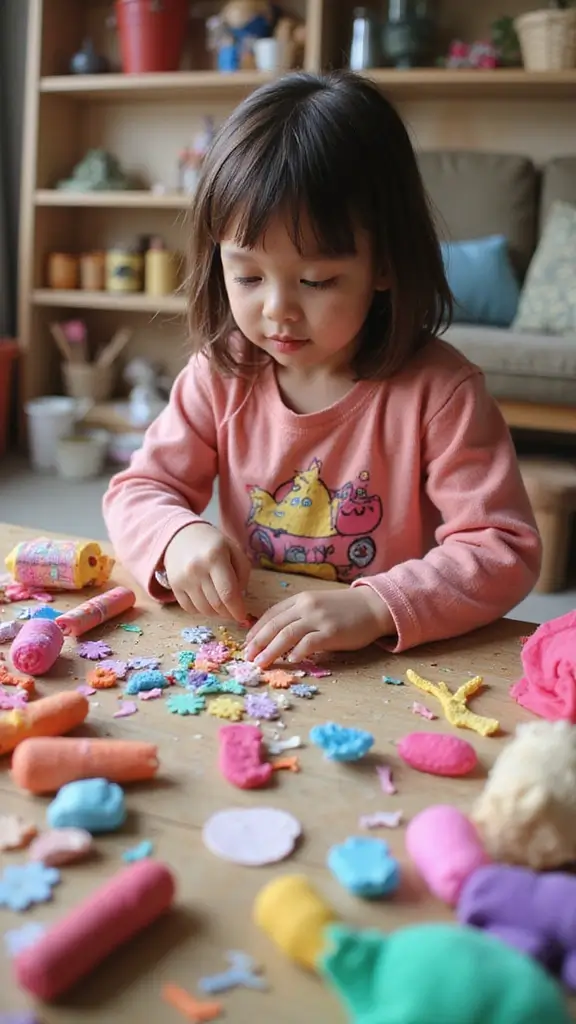
If you want your child to think more creatively during play, start with dolls. Dolls help kids act out scenes and tell new stories, showing the educational benefits of dolls. You guide with simple prompts. Fill a tiny world with textures, sounds, and colors. For example, pull out two dolls, a scarf, a cup, and a chair. Ask questions like, What will they do next? How do they feel? Keep the start small so play is easy to join. As play grows, add props, switch outfits, or change the setting. This builds stories, language, and steady focus. Rotate toys to widen ideas and keep play fresh.
16. Encouraging Creativity in Play
Editor’s Choice

fash n kolor®, My Sweet Baby Disappearing Doll Feeding Set | Baby Care 6…
 AmazonCheck Price
AmazonCheck Price
Baby Doll Accessories Set – 7 Pcs Feeding and Caring Set with Magic Disa…
 Amazon$8.99
Amazon$8.99
Barbie Mysteries: Beach Detectives Daisy Doll Wearing Signature Removeab…
 Amazon$16.19
Amazon$16.1917. Enhancing Memory Skills
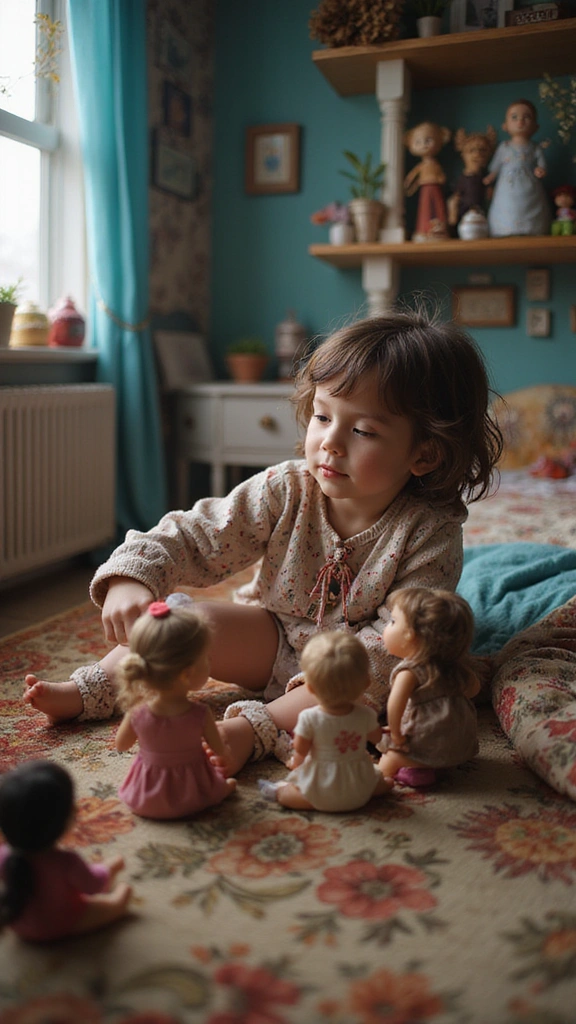
Here is why dolls boost your child’s memory. You want play that helps thinking, not chores. Doll stories turn memory into fun. Your child repeats plots, recalls actions, and shares lines. This strengthens memory recall, sharpens attention, and grows thinking skills.
– Memory Recall: remember plots and how a doll moved.
– Attention to Detail: notice outfits, voices, and tiny cues.
– Cognitive Growth: stronger memory for rules and sequences.
Try this: tell a story with one new detail, keep a simple doll diary, and end with a quick recall game.
This fits busy days and bedtime alike. You’ll see steady improvement.
17. Enhancing Memory Skills
Editor’s Choice

Barbie Mysteries: Beach Detectives Daisy Doll Wearing Signature Removeab…
 Amazon$16.19
Amazon$16.19

18. Building a Sense of Community

You want your child to feel they belong when friends play. Group doll time helps. It builds belonging and teaches kids to work with others.
– Friendship skills: they learn trust and eye contact while listening.
– Shared goals: they agree on a story and take turns.
– Respect for others: they hear ideas from kids and practice patience.
Next steps:
– Set up a play space for 2–4 kids.
– Use two dolls and props.
– Run a 10-minute story, rotate turns.
If a disagreement pops up, pause and reset with a hug.
18. Building a Sense of Community
Editor’s Choice

Barbie DreamHouse, Doll House Playset with 75+ Pieces Including Toy Furn…
 Amazon$161.99
Amazon$161.99
Cuddle Barn | Dalton The Storytelling Dragon 12″ Animated Stuffed Animal…
 Amazon$41.99
Amazon$41.99
ROBOTIME Wooden Dollhouse, Wooden Doll House with 29 Pieces of Furniture…
 Amazon$82.56
Amazon$82.5619. Teaching Life Skills
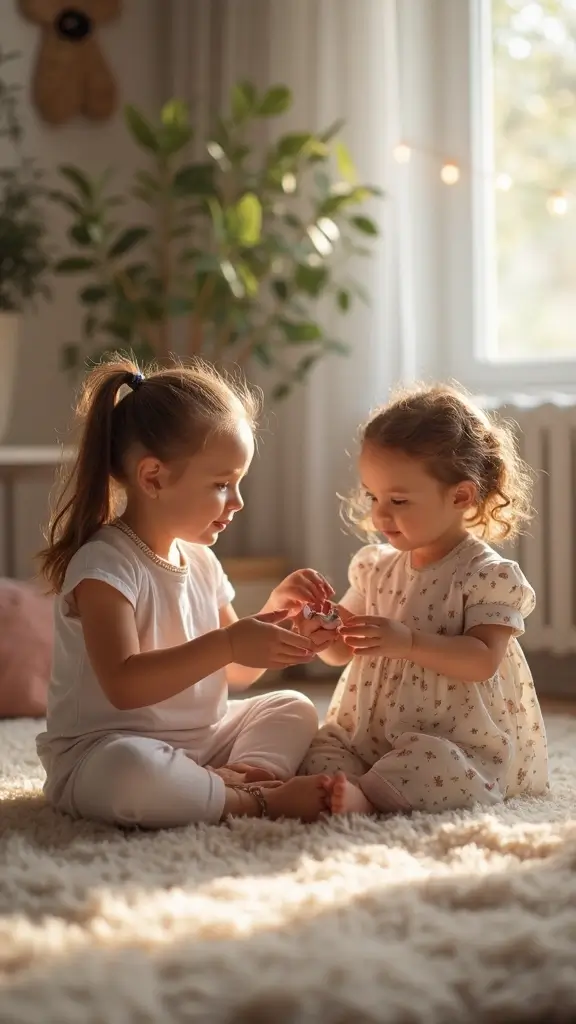
Teaching Life Skills with Dolls
If you want your child to gain independence, start with simple doll tasks. Here is why this works: dolls make tasks concrete, doable, and fun.
Dolls offer a safe, playful way to practice routines.
– Grooming: brush the doll’s hair and clean its face with a damp cloth.
– Dressing: pick tiny outfits and dress the doll.
– Organizing: sort clothes and place them in a small basket.
Benefits grow as your child learns: more self-reliance, steady daily routines, and better self-care habits.
Next steps: keep sessions short, use a simple chart, praise effort, and rotate toys if interest fades.
19. Teaching Life Skills
Editor’s Choice

Barbie Gymnastics Doll & Accessories, Playset with Blonde Fashion Doll, …
 Amazon$15.23
Amazon$15.23
71 Pcs Doll Clothes and Accessories, 5 Wedding Gowns 9 Fashion Dresses 3…
 Amazon$17.99
Amazon$17.99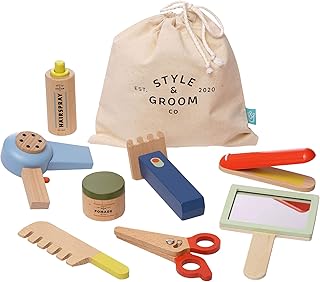
Manhattan Toy Style & Groom 9 Piece Wooden Toddler & Kids Pretend Play H…
 Amazon$27.97
Amazon$27.97
20. Creating Lasting Memories
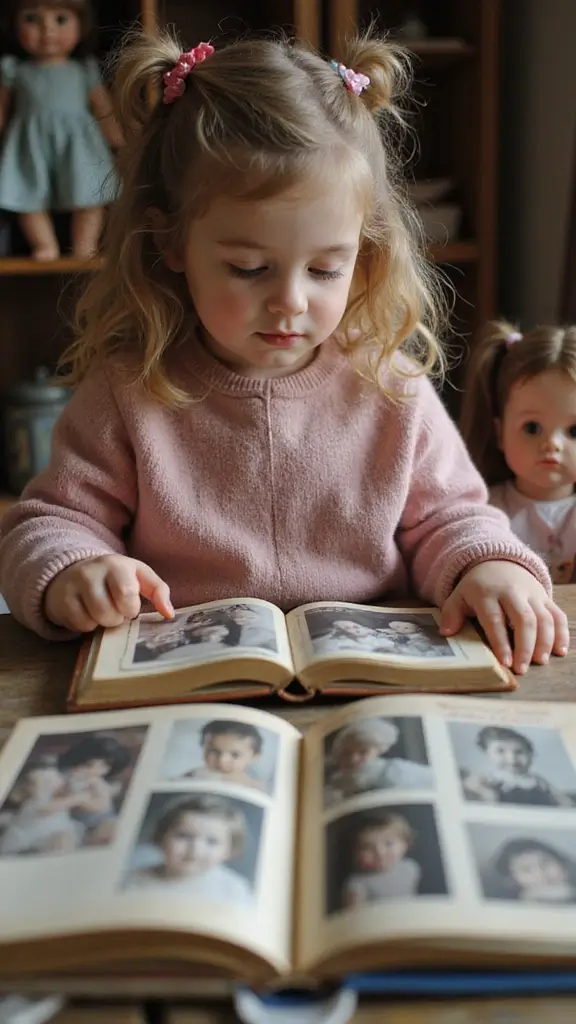
Creating Lasting Memories
You want memories your child will carry. Dolls help. When you play together, your child learns to plan, share, and calm feelings. Those scenes become memories your child revisits with a smile.
– Nostalgia: these memories feel cozy later.
– Emotional reflection: they see how feelings change.
– Personal history: dolls join their life story.
Here is how to boost these memories:
– Set up a routine, like a pretend tea with a doll.
– Snap a photo to save the scene.
– Keep a small journal about favorite plays.
– Include a family moment to make it real.
Next, keep it consistent and fun.
20. Creating Lasting Memories
Editor’s Choice

The Dollhouse: A psychological thriller (The Komorebi Serial Killer Series)
 Amazon$16.99
Amazon$16.99
Barbie Gymnastics Doll & Accessories, Playset with Blonde Fashion Doll, …
 Amazon$15.23
Amazon$15.23
Question a Day Journal for Kids: 365 Days to Capture Memories and Expres…
 Amazon$5.82
Amazon$5.8221. Promoting Positive Social Interaction
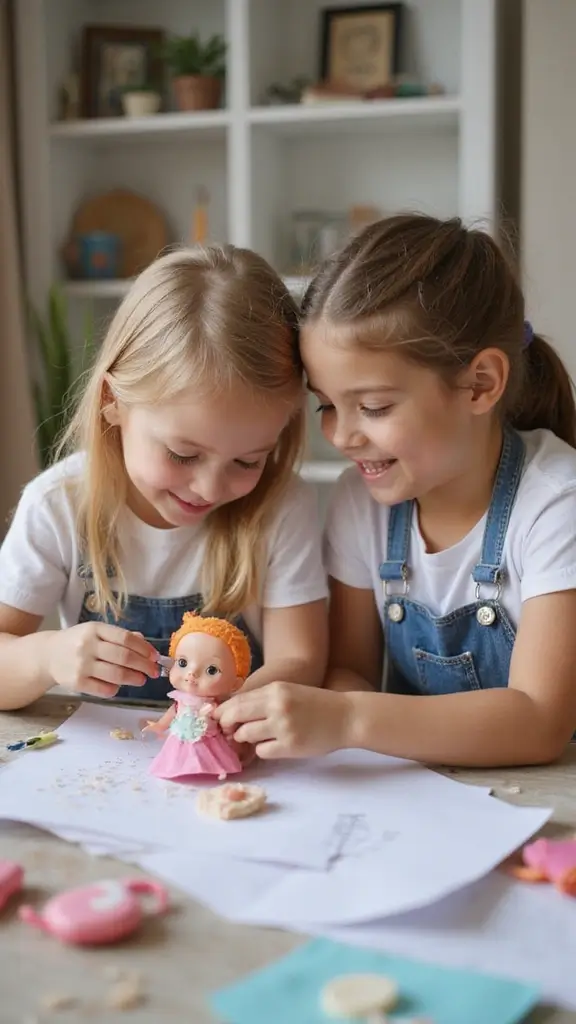
Here is why doll play helps your child make friends. It helps you practice talking and listening in a safe world. You learn to take turns and share space. You read feelings from faces and respond with kind words. This builds trust and real friendships over time.
– Plan short, shared scenes where dolls ask questions and wait for replies.
– Encourage your child to name a feeling and explain why.
– Create a mild conflict and guide a calm, fair solution.
– After play, talk about what happened and what helped.
You will see stronger social skills at school and on the playground.
21. Promoting Positive Social Interaction
Editor’s Choice

Barbie Gymnastics Doll & Accessories, Playset with Blonde Fashion Doll, …
 Amazon$15.23
Amazon$15.23
Excellerations 18″ Bilingual Emotions Plush Baby Dolls, Set of 4 | Multi…
 Amazon$94.99
Amazon$94.99
DC-BEAUTIFUL 16 Pcs Baby Doll Diapers Underwear Set Fits 14 Inch to 18 I…
 Amazon$13.99
Amazon$13.9922. Teaching Accepting Differences
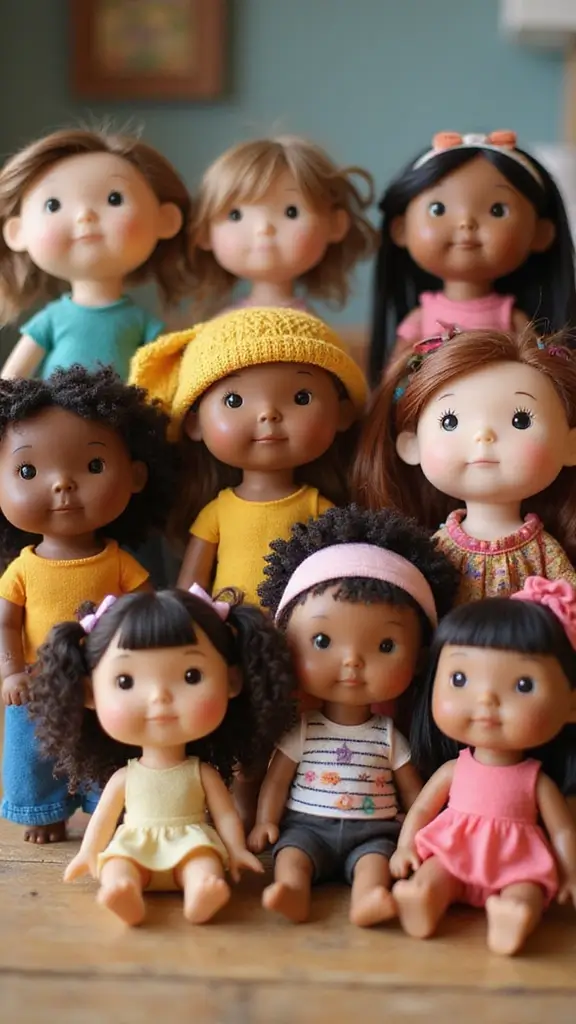
You want your child to see people as equals. Dolls can teach that gently. Use dolls with different skin tones, hair textures, and outfits. This helps your child notice a wider world.
– Diversity in play: pick a few dolls with different looks. Have your child describe features and compare how they feel about each one.
– Story prompts: ask simple questions like, “What would you name her?” or “What tradition could you share with him?”
– Real life links: talk about meals, celebrations, and places these dolls come from. Connect them to real life.
– Be a model: speak kindly about every culture. Invite friends to join in and show inclusion.
Next steps.
22. Teaching Accepting Differences
Editor’s Choice

Basket of Buddies Plush Diversity Multicultural Ethnic Dolls | Diversity…
 Amazon$38.99
Amazon$38.99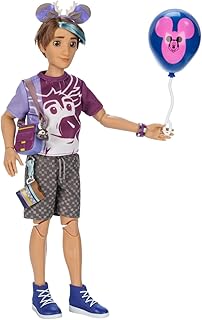
Disney Inspired by Sven – Frozen ily 4EVER Doll – 11”
 Amazon$27.21
Amazon$27.21
Basket of Buddies Plush Diversity Multicultural Ethnic Dolls | Diversity…
 Amazon$38.99
Amazon$38.9923. Encouraging Problem-Solving Skills
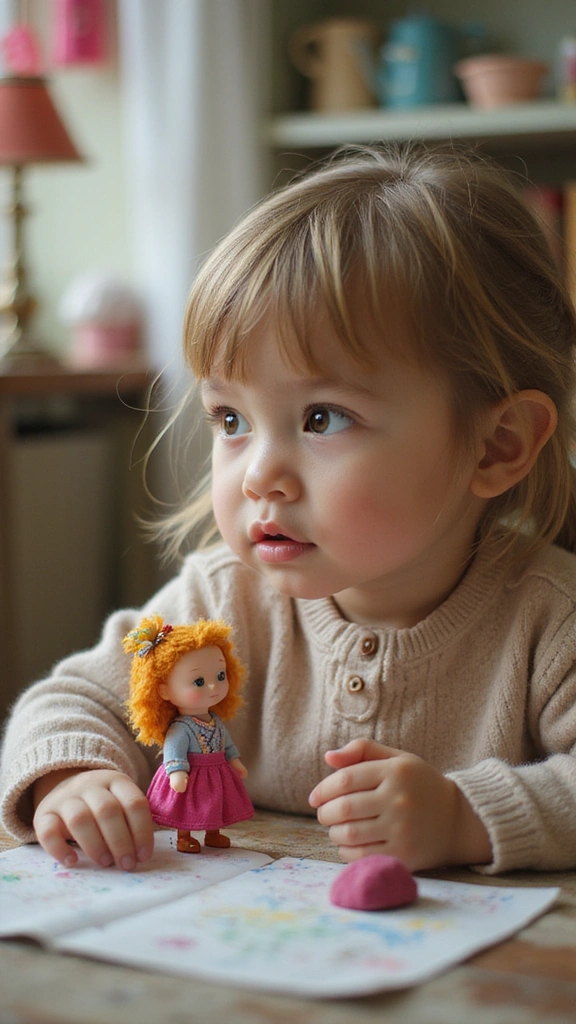
Are you looking for gentle ways to boost your child’s problem-solving while they play? Doll play helps your child think through scenes, test ideas, and try endings. Here is why it helps: it trains the mind to spot puzzles and plan steps. You’ll see growing imagination and calmer play.
Key skills you’ll notice
– Critical thinking: Your child analyzes problems and finds a plan.
– Adaptability: They learn to shift plans when a scene changes.
– Decision-making: They weigh options and pick a first move.
To make it practical, use open prompts. Next, set up a simple scene, ask for ideas, and discuss what worked.
23. Encouraging Problem-Solving Skills
Editor’s Choice

Doll House Portable & Foldable Dollhouse w/ 60+ Pcs & 2 Dolls, Play Hous…
 Amazon$39.99
Amazon$39.99
AI Children’s Storytelling Toy Machine – Interactive Audio Player, Combi…
 AmazonGBP 37.00
AmazonGBP 37.00
Children’s Role-Playing Costume Set, Toddler Outfit, Toy Doctor Tool Kit…
 Amazon$38.99
Amazon$38.9924. Enhancing Physical Activity
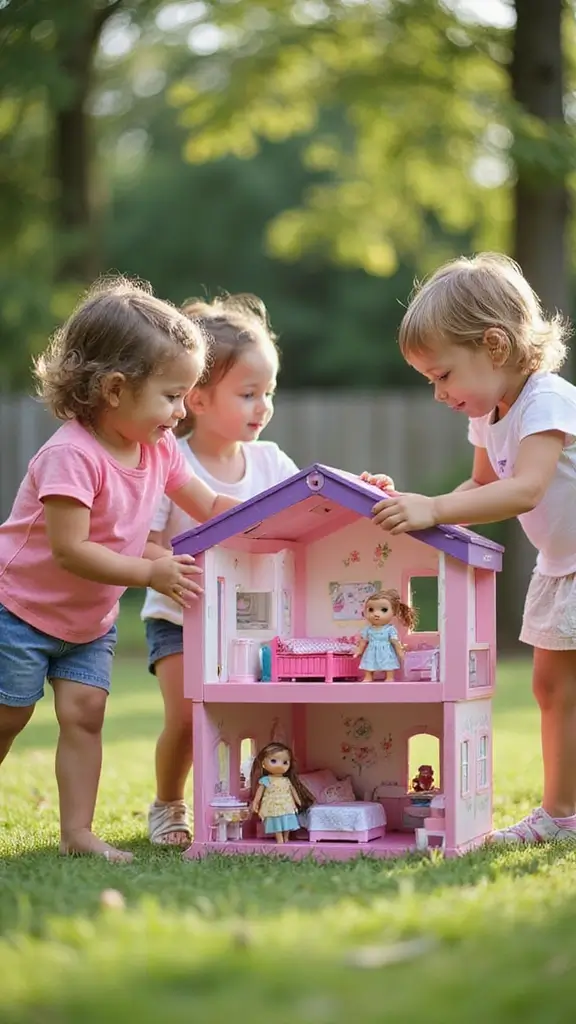
Here is why doll play boosts physical activity. You want your child to be more active. Doll play can help.
– Active Play: Doll scenes move your child from sitting to standing. They walk, reach, and bend while arranging dollhouse rooms or pushing a toy stroller.
– Coordination Skills: You can lift tiny doll furniture and line up pieces to build big motor control. This practice helps your child with balance and fine motor skills during pretend play.
– Healthy Habits: You can help your child keep a rhythm of quick moves during play. Add simple tasks like tidy-ups and quick outfit changes to keep your child moving between scenes.
Doll play isn’t just fun; it’s a workout! As children engage in active play, they boost their coordination while turning imagination into physical action. Let their creativity move them!
24. Enhancing Physical Activity
Editor’s Choice

Giant bean 36pcs Wooden Dollhouse Furniture Set 5 Rooms 4 Family Dolls, …
 Amazon$35.99
Amazon$35.99

Melissa & Doug Mine to Love Toy Time Play Set for Dolls with Activity Gy…
 Amazon$23.49
Amazon$23.4925. Inspiring Future Roles

Here is why dolls help your child imagine what comes next. You can use play to try on different roles in a safe way. When your child acts as a doctor, a builder, or a teacher, they feel what the job is like and what it takes. This kind of play builds plans, not just games.
Ways to try it:
– Career ideas: ask questions about the job as you play.
– Goal sights: have your child name a job and draw it.
– Life skills: practice small chores, sharing, and writing a note.
Keep going. Keep sessions short, praise effort, and add roles gradually.
25. Inspiring Future Roles
Editor’s Choice

Dollhouse with 4 Princesses, 4 Unicorns, Dog, Furniture and Accessories …
 Amazon$39.99
Amazon$39.99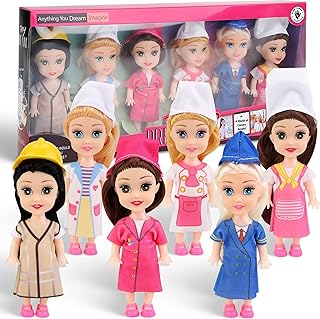
Liberty Imports Little Career Toddler Dolls with Dresses, Girls Imaginat…
 Amazon$12.97
Amazon$12.97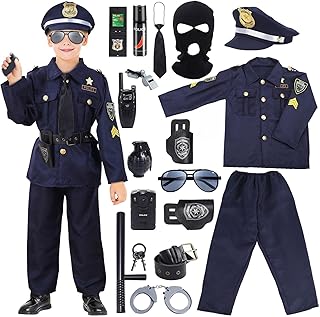
16PCS Police Costume for Kids,Police Officer Costume for Kids,Kids Cop C…
 Amazon$29.99
Amazon$29.99Conclusion
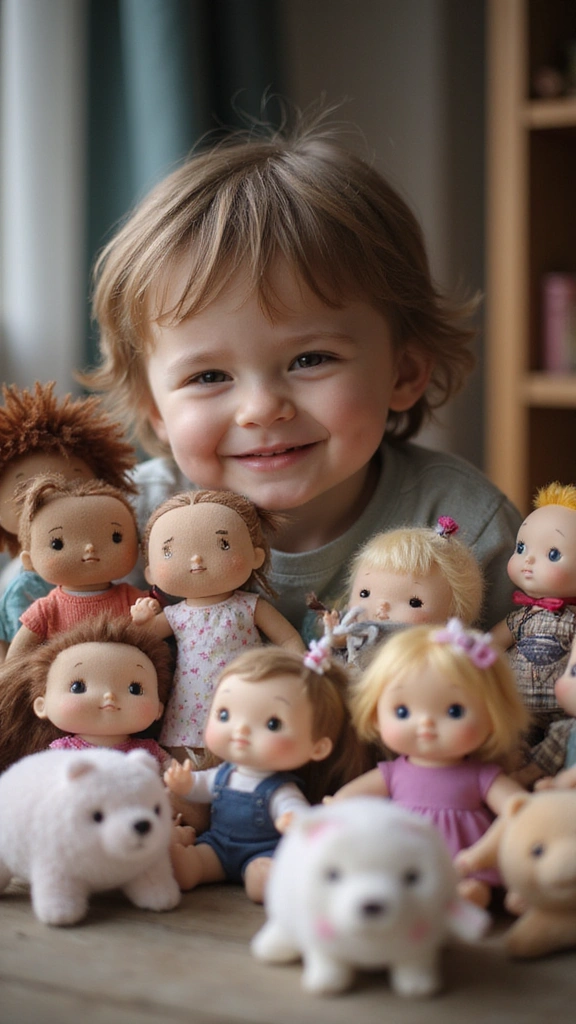
The educational benefits of dolls stretch far beyond mere playtime. With each interaction, children develop crucial skills that shape their imagination and social abilities. From enhancing creativity to building empathy, these little companions pave the way for valuable life lessons.
So, consider the dolls your child selects not just as toys, but as tools for growth and learning. Let them engage, create, and explore the world of their imagination through the magic of doll play.
Note: We aim to provide accurate product links, but some may occasionally expire or become unavailable. If this happens, please search directly on Amazon for the product or a suitable alternative.
This post contains Amazon affiliate links, meaning I may earn a small commission if you purchase through my links, at no extra cost to you.
Frequently Asked Questions
What Are the Educational Benefits of Dolls for Imagination?
Dolls are incredible tools for sparking your child’s imagination. When children play with dolls, they create entire worlds, act out stories, and explore different scenarios. This kind of play not only enhances their creativity but also allows them to experiment with various narratives and roles, fostering a deeper understanding of storytelling.
How Do Dolls Help Develop Social Skills in Children?
Playing with dolls provides a unique opportunity for children to practice social skills. As they engage in role-playing and create dialogues between dolls, they learn valuable skills such as sharing, listening, and taking turns. This interactive play lays the groundwork for better communication and teamwork in real-life situations.
Can Playing with Dolls Enhance Emotional Intelligence?
Absolutely! When children care for dolls, they practice empathy and emotional awareness. This play scenario allows them to explore different feelings and reactions, which is crucial for developing emotional intelligence. By nurturing their dolls, they learn to recognize and respond to emotions, enhancing their ability to connect with others.
What Life Skills Can Children Learn Through Doll Play?
Doll play is a fantastic way for children to absorb important life skills. Activities such as dressing, feeding, and caring for dolls mimic real-life responsibilities. This type of play encourages decision-making, problem-solving, and even patience, helping children understand daily tasks in a fun and engaging way.
How Can Parents Use Dolls to Foster Cultural Awareness?
Dolls can be a wonderful gateway to teach children about different cultures. By introducing dolls that represent diverse backgrounds, children can learn to appreciate cultural differences and develop respect for others. This exposure fosters an understanding of our world’s rich tapestry, promoting inclusivity and empathy from a young age.
